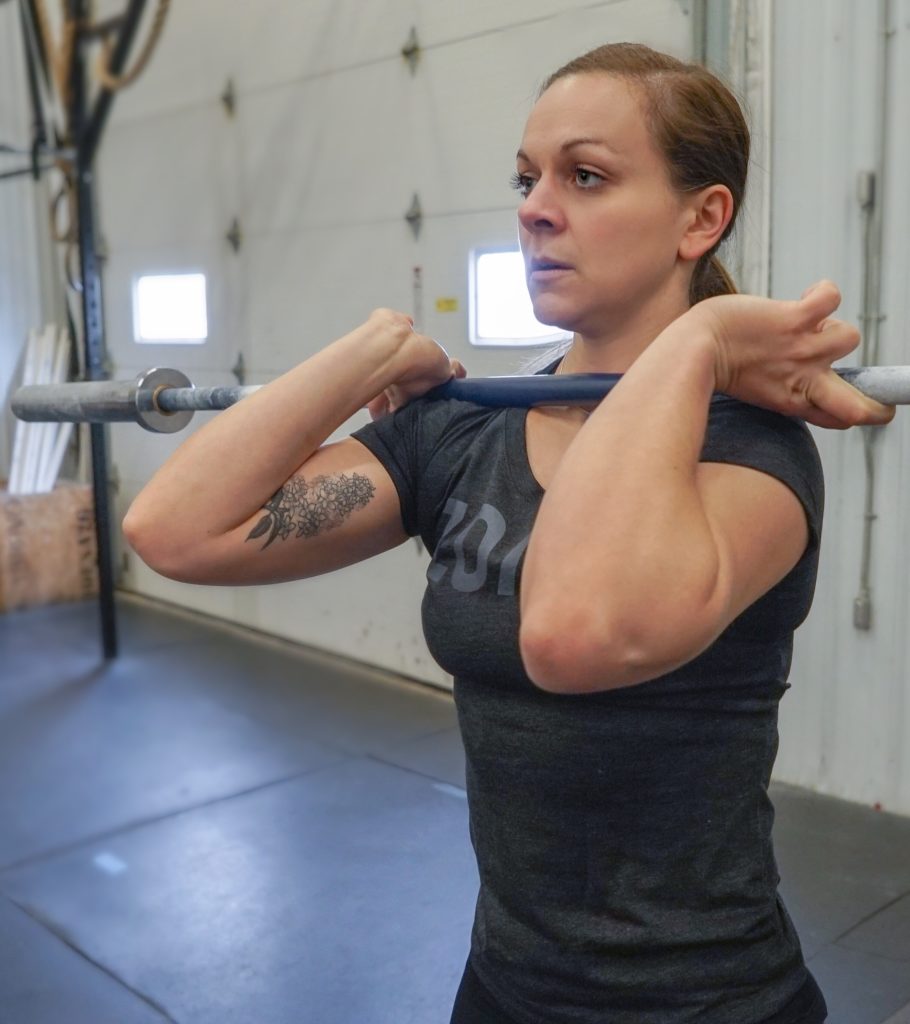Show Notes
Part I: How are Wall Balls Tested?
The Open
Open 11.5
AMRAP 20:00
-5 Power Clean 145/105
-10 TTB
-15 WB
Open 12.4/13.3
AMRAP 12:00
-150 WB
-90 DU
-30 RMU
Open 14.4
AMRAP 14:00
-60 Cal Row
-50 TTB
-40 WB
-30 Cleans 135/95
-20 RMU
Open 15.3
AMRAP 14
-7 Ring Muscle-Ups
-50 Wall Balls
-100 Double-Unders
Open 16.4/17.4
AMRAP 13
-55 Deadlifts 225/155lb
-55 Wall Ball
-55 Calorie Row
-55 HSPU
2018 (No Wall Balls!)
19.1
-19 Wall Ball
-19 Calorie Row
20.5
For Time [20 Minute Time Cap]
*Partition As Desired*
-40 Ring Muscle-Ups
-80 Calorie Row
-120 Wall Ball
2021 (No Wall Balls!)
Quarterfinals, AGOQ,
Age Group Games
2021 Quarterfinal E3
For Time
-120 WB
-120 Row Cals
AGOQ
(Wall Balls have only appeared once in the history of the AGOQ) 2014-2021
2014 E4 | For Time
-100 Pull-Ups
-100 Wall Balls 20/14lb, 10/9ft
Age Group Games 2018 – E2
For Time (4min Cap)
-40ft HSW O-Course
-20 Wall Ball 30/20lb to 10/9ft
-40ft HSW O-Course
Age Group Games 2017 – E9
For Time (15min Cap)
-10 RMU
-30 Wall Ball
-50ft HSW
-25ft Sandbag Carry
-10 RMU
-30 Wall Ball
-25ft HSW
-25ft Sandbag Carry
-10 RMU
-30 Wall Ball
Age Group Games 2016 – E1
For Time (20min Cap)
-8 Deadlift 365/255lb
-40 GHD (F: 6″ Riser)
-80 DU
-4 Rope Climb 15ft
-80 Wall Balls
-4 Rope Climbs 15ft
-80 DU
-40 GHD (F: 6″ Riser)
-8 Deadlift 315/225lb
CrossFit Games
2009 – E4
3 Rounds for Time
-30 Wall Ball
-30 Squat Snatch 75/45lb
2011 – Last 3 Events
“The End 1, 2 & 3”
For Time
-20 Calorie Row
-30 Wall Ball, 20/14lb
-20 Toes-to-Bars
-30 Box Jumps 24/20″
-20 Kettlebell Sumo Deadlift High Pulls 108/72lb
-30 Burpees
-20 Shoulder-to-Overheads 135/95lb
-200ft Sled Pull 205/145lb
Wall Ball Data Comparison
Open Appearance: 16.7% Chance* (9/54)
Games Appearance: 2.4% Chance* (4/168 events)
(You are 7.3x as likely to see Wall Balls in the Open than the Games.)
Small Chunking: 15 reps
Largest Chunking – 150 reps
Average Chunking – 57 reps
*based on data through 2021
*does not include duplicates or the 20.4 choose your own adventure workout
Functional Volume: the maximum number of contractions in a movement that an athlete will perform based on the testing parameters of his or her sport
Part II: How Do Wall Balls Differ from other Similar Movements?
It’s simple in theory: It’s a squat in and a press.
No different from a thruster… right?!
What is Unique?
• Acceleration vs. Deceleration (at top of squat)
• You release and catch the object
(increases Time under Tension & precision requirement)
• Holding an Object in Hands vs. It Resting in the Front Rack
(often inefficient people are better at WBs)
(isometric contraction – spike in HR & BP)
• Light vs. Heavier Squats (SSC is Impacted)
• Breathing | Since the Cycle Speed is different than other squatting movements, the breath pattern must be as well.
What has Worked for Me?
(1) Consistent “Entry” – stance width, distance from wall, pull under
(2) “Front Rack” Hand & Thumb Placement
(3) Tripod of Contact: holding high, low or somewhere between
(4) Squat Mechanics – wider stance – more hip tension
• More upright torso squat – avoid the “immature squat”
(5) Drop Your Hands: relaxes the shoulders & sets you up for a more precise catch
(6) Accuracy: You are playing catch with a 20/14lb ball.
• Be Precise: Throw a Knuckleball – impact the target with no rotation
(7) Breathing: Breathing in WBs like other strength squatting movements a recipe for blowing up.
• Most athletes breathe in a 1:1 breath ratio; that’s 1 breath for 1 rep.
• Typically, inhale on the eccentric, lowering portion and exhale on the concentric, raising portion.
• This is almost impossible for most athletes to maintain.
Breathing 1:1 in a WB – that’s 2s / rep – that’s 30 breaths / min
(slow, too slow for the work rate)
Breathing 2:1 Breath-to-Rep Ratio – that’s 60 breaths / min
(fast, but that’s necessary at a high work rate)
• So the solution is exhaling as you descend in the squat and exhale again as the ball hits that target.
Part III: Training Wall Balls
Step 1: Do Wall Balls More
The format doesn’t matter.
Just do them consistently for a several months.
Step 2: Check your Chunking & Volume
(15-100 in sets. Until you reach 100-200 reps.)
• Track your volume, chunking and average density as you go
• Depending on the format you may be able to know those factors ahead of time (Rounds for Time, Intervals, EMOM)
(or)
• You may have to do some post-game analysis (AMRAPs, Auto-Regulated Sets)
Step 3: Do Tailored Protocols & Progressions
Keep it simple to start.
Week 1 | EMOM 10: 10 Wall Balls (100 in 10 minutes)
Week 2 | EMOM 11: 10 Wall Balls
Week 3 | EMOM 8: 14 Wall Balls
Week 4 | EMOM 10: 12 Wall Balls
Week 5 | EMOM 9: 14 Wall Balls
Week 6 | EMOM 10: 15 Wall Balls (150 in 10 minutes)
Still searching for more gains?
Let’s identify what is your rate-limiting process.
(aka. the system that is slowing you down)
Most people are going to be limited by 1 of 3 things…
(1) Respiratory System = breathing
(you can’t ventilate enough)
(2) Cardiac System = heart rate & stroke volume = cardiac output
(delivery of oxygen into the working muscle)
(3) Muscular System = muscular endurance and contractile potential
Rate Limiting Process 1: Muscle Endurance Limiter
This is you if… you’re not breathing super hard, but your muscle feels like it’s burning up and you are starting to fail reps, where you can’t throw it high enough to hit the target
Muscular Endurance Progression
5 Sets:
-5 Strict Press 155 @30×1
-Rest 15s
-12 Incline DB Press 50/Hand
-Rest 15s
-Max Wall Balls*
*stop when you are forced to jump
(Rest 3:00 b/w sets)
Week 2 = 6 Sets
Week 3 = 7 Sets
Week 4 = 4 Sets (deload)
Week 5 = 7 Sets
Week 6 = 8 Sets
Muscular Interference Intervals
Week 1: EMOM 15
1) 15s Max Wall Walks
2) 15s Max kHSPU
3) 15s Max Wall Balls
Week 2 = 18s each
Week 3 = 21s each
Week 4 = 24s each
(or)
EMOM 15
1) 15s Max Wall Walks
2) 15s Max kHSPU
3) 15s Max Wall Balls
Week 2 = EMOM 18
Week 3 = EMOM 21
Week 4 = EMOM 24
Rate Limiting Process 2: Capacity Limiters
This is you if… your muscles aren’t screaming at you, but you are either hyperventilating or you feel like you just can’t keep up with the work rate.
Physiologically, this probably means that your cardiac output might not be enough.
If that’s the case, it will affect your breathing, it will affect your muscular endurance, basically if your heart isn’t an efficient pump, your performance -in all aspects of fitness- will suffer.
4 Sets:
-500m Row @ Ramping Pace
*increase your pace every 100m, ending at your 2k TT Pace)
(e.g. 2:00-1:55-1:50-1:45-1:40)
-AMRAP-3-5 Unbroken Wall Balls
*rest to 8/10 recovery b/w sets
{Progression is Autoregulated}
6 Rounds for Time
-15 Calorie AirBike
-25 Wall Balls
*WB must be unbroken
{progression is to increase AB avg. watts or increase Wall Ball volume}
19.1 Progression
Week 1: Test Open 19.1
*determine your pace and write progressively harder intervals of EMOMs from there
*this protocol is my progression based upon 1:58 rounds of 19.1.
Week 2: EMOM 2
1) 17 Wall Ball
2) 30s Row
*score is total row cals
Week 3: EMOM 24
1) 20 Wall Ball
2) 12 Cal Row @ 1350-1400 Cals / Hr
Week 4: EMOM 18
1) 22 Wall Ball
2) 13 Cal Row @ 1350-1400 Cals / Hr
*if unable to sustain pace, break for exactly 1:00 and restart
Week 5: Every 1:54 x 8: 19 Wall Balls + 19 Row Cals (19.1 PR)
Don’t know where to start?
Just pick a Protocol that excites you and commit to running it in its entirety.
Test & ReTest at the beginning and end with some sort of Wall Ball test and see if you improve.
Then reflect, see what worked and what didn’t work and move on.
That’s the training process in a nutshell.



1-on-1 Remote Coaching
• Customized workouts tailored to your needs
• Video calls with your coach every training cycle
• Video analysis – having “eyes” on your technique
• Strength & Energy Systems Testing
• Access to Pro (Articles, The Vault, The Protocol)
• No commitment. Pay monthly. Cancel Anytime.
